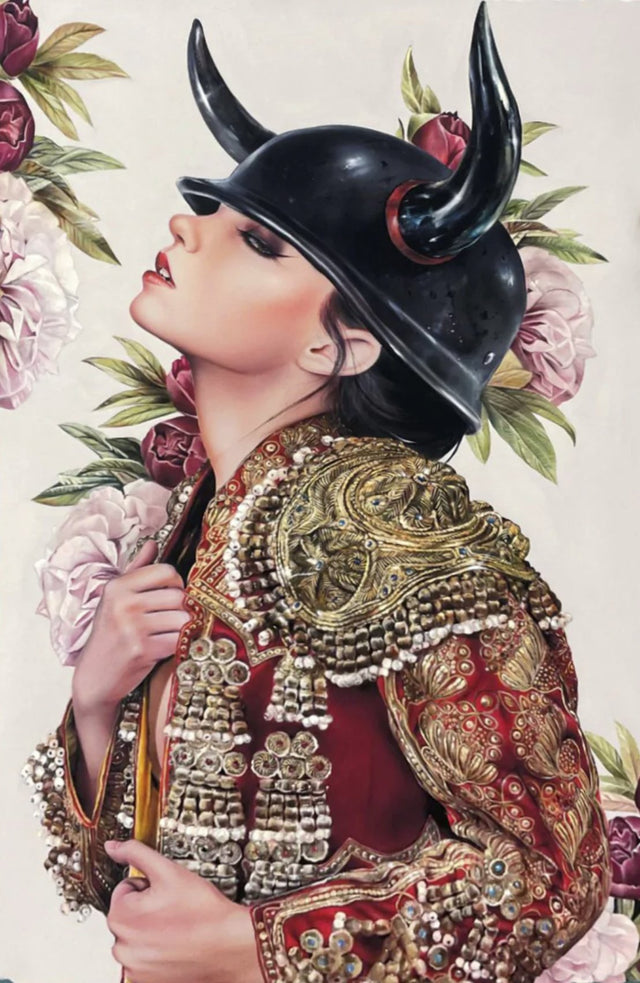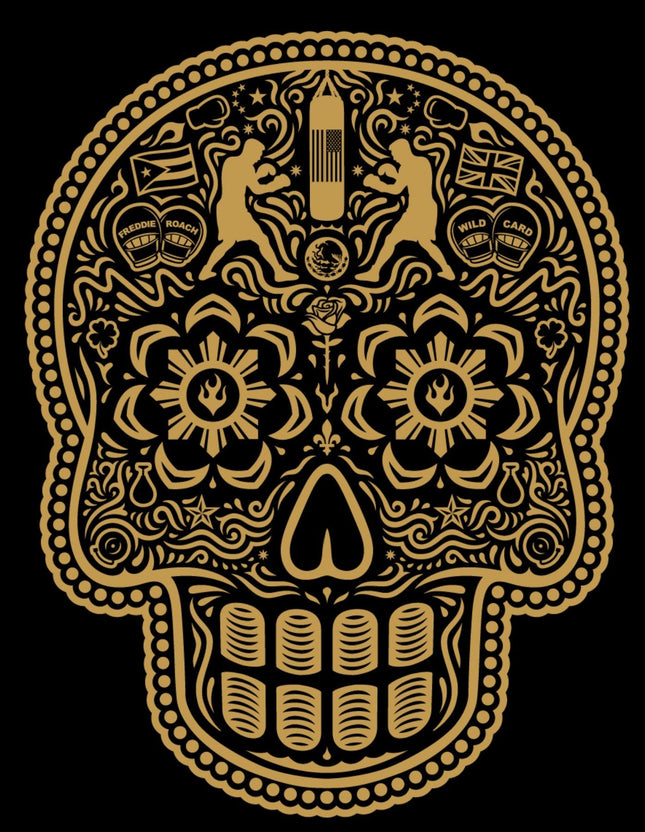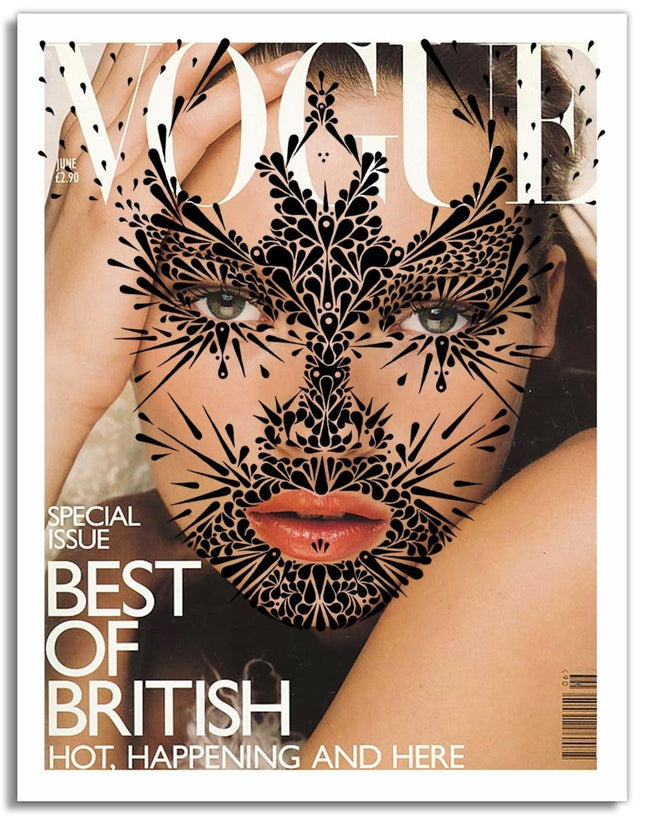
Spanish

Ernesto Yerena Montejano- Hecho Con Ganas Wild Card Boxing Club Calavera Silkscreen Print by Ernesto Yerena Montejano- Hecho Con Ganas
Wild Card Boxing Club Calavera Limited Edition 1-Color Hand-Pulled Silkscreen Print on Fine Art Paper by Ernesto Yerena Montejano Graffiti Street Artist Modern Pop Art. 2015 Signed & Numbered Wild Card Boxing Calavera 18x24 Edition of 300 Signed and Numbered Signed by Freddie Roach & Ernesto Yerena Montejano "Growing up in a Mexican-American working class family and community, I remember how important sports were to most of my friends and their families. Particularly, I so remember the early 90’s and seeing a lot of Raider, Charger, Chivas de Guadalajara and America jersey’s and of course those of the Dodger’s and their blue and white hats with the iconic LA blazoned on the front. But my immediate family was different. My dad who in the early 1990’s sold automotive paint and painted cars was surprisingly not that much into the usual sports but all except for BOXING! At that point in time I remember the gatherings at my house when there was a Julio Ces One- Rob Provenzano ar Chavez fight, a De La Hoya fight or a Maromero Paez fight. My dad would bring the TV outside, set-up a bunch of chairs, roll out the grill, fire up the mesquite and lay down the marinated carne asada before the first round bell. I remember how much fun those days were and how much pride people had in the Mexican fighters." -Ernesto Yerena Montejano
$364.00

Stinkfish Vogue Black Silkscreen Print by Stinkfish
Vogue- Black Hand-Pulled Limited Edition Silkscreen Print on Fine Art Paper by Stinkfish Rare Street Art Famous Pop Artwork Artist. 2015 Signed & Numbered Vogue by Stinkfish Screen Print Edition of 60 | Signed by the Artist Size: 18" x 24" City: Bogata, Colombia. The first release was based on a Spanish language magazine Stinkfish had found - the second is based on an English language magazine they had found for him. His lively detailing abstract redefines the glamor and beauty of Kate Moss. Stinkfish and the Evolution of Street Pop Art The Colombian street artist, Stinkfish has carved a unique space for himself in contemporary art. His works, often characterized by vibrant colors and intricate stencils, reflect the dynamic energy of street culture. One of his notable contributions to the art world is a limited edition silkscreen print on fine art paper titled "Vogue," a work that seamlessly blends street art's rawness with pop culture's polished aesthetics. This particular piece from Stinkfish pays homage to the iconography of fashion magazines, explicitly drawing inspiration from a Vogue cover. It's a rare street art piece that elevates the familiar image of a fashion model to a work of famous pop artwork. Created in 2015, this signed and numbered screen print is part of an exclusive series, with only 60 editions made available, each measuring 18" x 24". The art was conceptualized in Bogota, Colombia, and it represents a significant departure from Stinkfish's often more spontaneously created public murals. The Artistic Process Behind Stinkfish's "Vogue" The "Vogue" silkscreen print by Stinkfish is particularly notable for its process and backstory. The inception of the artwork is rooted in the discovery of a Spanish-language magazine that caught the artist's eye. Later, a second iteration was based on an English language magazine provided for him, suggesting a narrative that spans cultures and languages. This cross-cultural journey is central to understanding the piece, reflecting the globalized nature of both street art and fashion. The artwork showcases Stinkfish's signature style, with intricate black patterns overlaying the photograph, transforming the image into something more abstract and lively. The patterns vibrate with life, giving the piece a kinetic energy that redefines the glamour and beauty associated with the fashion model, reportedly Kate Moss. Stinkfish's work disrupts the conventional portrayal of fashion figures, infusing them with a rebellious and celebratory spirit. Impact and Significance of "Vogue" in Street Pop Art "Vogue" is a testament to street pop art's transformative power. Stinkfish's approach to the piece—taking a symbol of high culture and reinterpreting it through the lens of street art—challenges perceptions of value and beauty in the art world. By incorporating elements of graffiti artwork, the print becomes a commentary on the permeable boundaries between high and low culture, between the exclusive elite of fashion and the inclusive, democratic nature of street art. The limited edition nature of "Vogue" also speaks to the changing landscape of art collection. Traditionally, street art is ephemeral, often illegal, and created in the public eye. By transferring his work onto fine art paper and limiting its production, Stinkfish bridges the gap between the fleeting nature of street art and the permanence sought by collectors. This rare edition allows for broader access to his work and elevates the status of street art within the fine art market. Stinkfish's "Vogue": A Cultural Intersection Stinkfish's "Vogue" silkscreen print is much more than a collectible piece of art; it is a cultural artifact that embodies the intersection of diverse artistic worlds. It encapsulates the essence of street pop art and graffiti artwork while respecting the polished world of fashion. This print is not merely a representation of a fashion icon but a redefined image that challenges the viewer to see beyond the surface and appreciate street art's underlying vibrancy and complexity. As such, "Vogue" by Stinkfish is a significant contribution to the discourse on the value and place of street art in contemporary culture.
$209.00



